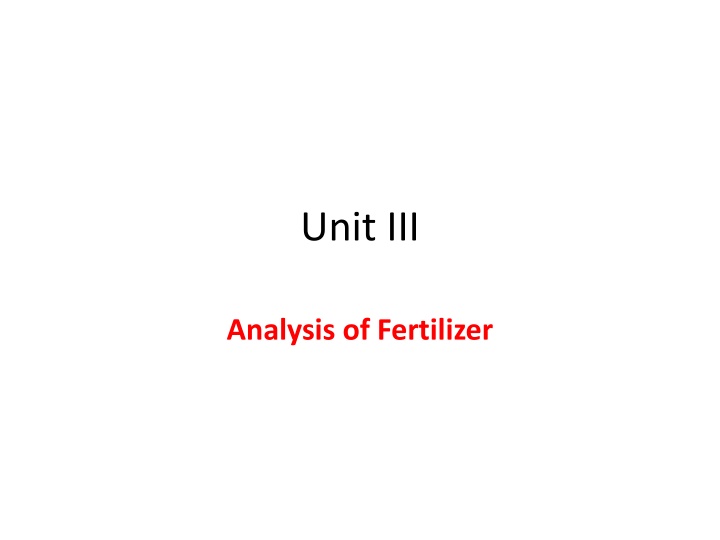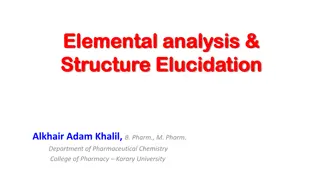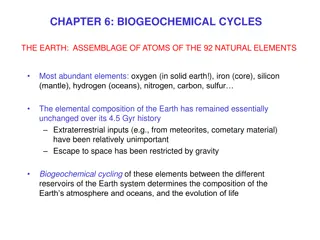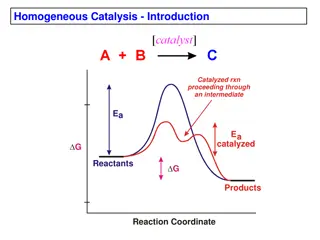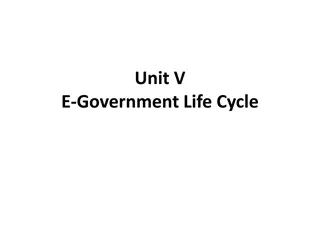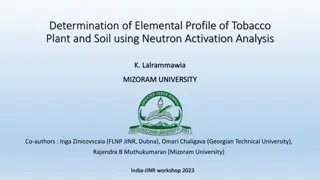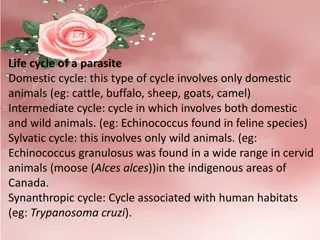Biogeochemistry: Influencing Elemental Cycles
The study of biogeochemistry focuses on the interplay of biological, geological, and chemical factors affecting the movement of chemical elements in living systems over space and time. This interdisciplinary field explores processes at various scales, from microbial to global levels, highlighting the interconnectedness of elements like carbon, nitrogen, phosphorous, and sulfur. Isotopes play a crucial role in biogeochemical research, revealing unique signatures across different ecosystems and organisms. Understanding biogeochemistry aids in comprehending elemental cycles and their implications in environmental systems.
Download Presentation

Please find below an Image/Link to download the presentation.
The content on the website is provided AS IS for your information and personal use only. It may not be sold, licensed, or shared on other websites without obtaining consent from the author.If you encounter any issues during the download, it is possible that the publisher has removed the file from their server.
You are allowed to download the files provided on this website for personal or commercial use, subject to the condition that they are used lawfully. All files are the property of their respective owners.
The content on the website is provided AS IS for your information and personal use only. It may not be sold, licensed, or shared on other websites without obtaining consent from the author.
E N D
Presentation Transcript
Unit III Analysis of Fertilizer
Fertilizers Straight Complex Mixed
Straight fertilizers are those which supply only primary plant nutrient (N, P &K) Ex. Urea Ammonium phosphate Potassium chloride Potassium sulphate Complex fertilizers contain 2 or 3 primary plant nutrients of which two primary nutrients are in chemical combination. Usually produced in granular form. Diammonium phosphate Nitro phosphate Ammonium phosphate Mixed fertilizers are physical mixtures of straight fertilizers. They contain two or three primary plant nutrient. Made by thoroughly mixing the ingredients either mechanically or manually.
Based on concentration of primary plant nutrients (N, P & K) in Fertilizers: Low Analysis Fertilizers High Analysis Fertilizers Total content of primary nutrients is above 25%. Fertilizers contain less than 25% of primary nutrients. Example- Urea (46% N) Example- Anhydrous ammonia (82.2% N) SSP (16% P2O5) Example- Sodium nitrate (16% N) Ammonium Phosphate (20% N +20% P2O5)
Classification based on Physical form: Solid Fertilizers Liquid Fertilizers Liquid form fertilizers are applied with irrigation water or for direct application. Two types: 1: Clear liquid fertilizers (when the Fertilizers are completely dissolved in water) 2: Suspension liquid Fertilizers (when Fertilizers are suspended as fine particles in water) Powder (single superphospate) Crystals (ammonium sulphate) Prills (urea, Diammonium phosphate, superphosphate) Granules (Holland granules) Briquettes (Urea briquettes)
Classification based on nature of fertilizers: Alkaline Forming Fertilizers or Basic Fertilizers Acid Forming Fertilizers Fertilizers which leave an acid Fertilizers which leave an residue in the soil. alkaline residue in the soil. Apply acid forming fertilizers to alkaline soil. Apply acid forming fertilizers The amount of calcium carbonate to alkaline soil. required to neutralize the acid residue is called its Acid equivalent.
Fertilizer Acid equivalent Ammonium chloride 128 Ammonium sulphate 110 Ammonium sulphate 93 nitrate Ammonium phosphate 86 Urea 80
Fertilizer Equivalent Basicity Sodium nitrate 29 Calcium nitrate 21 Calcium cyanide 63 Dicalcium phosphate 25
Fertilizer Grade: Fertilizer grade refers to the minium percentage of nitorge (N), phosphorous(P2O5) & Potash (K2O) present in fertilizer material. Fertilize analysis expresses weight as a percent of nitrogen, phosphorous & potassium
Fertilizer Analysis: For example A 100 kg bag of fertilizer has an grade of 15-15-8. Nitrogen: 100 X 15% = 15kg Phosphorous: 100 X 5% = 5kg Potassium: 100 X 18% = 18kg
Nitrogenous Fertilizers: The fertilizer materials containing nitrogen are called nitrogenous fertilizers. They may contain secondary nutrients like Calcium & Sulphur.
